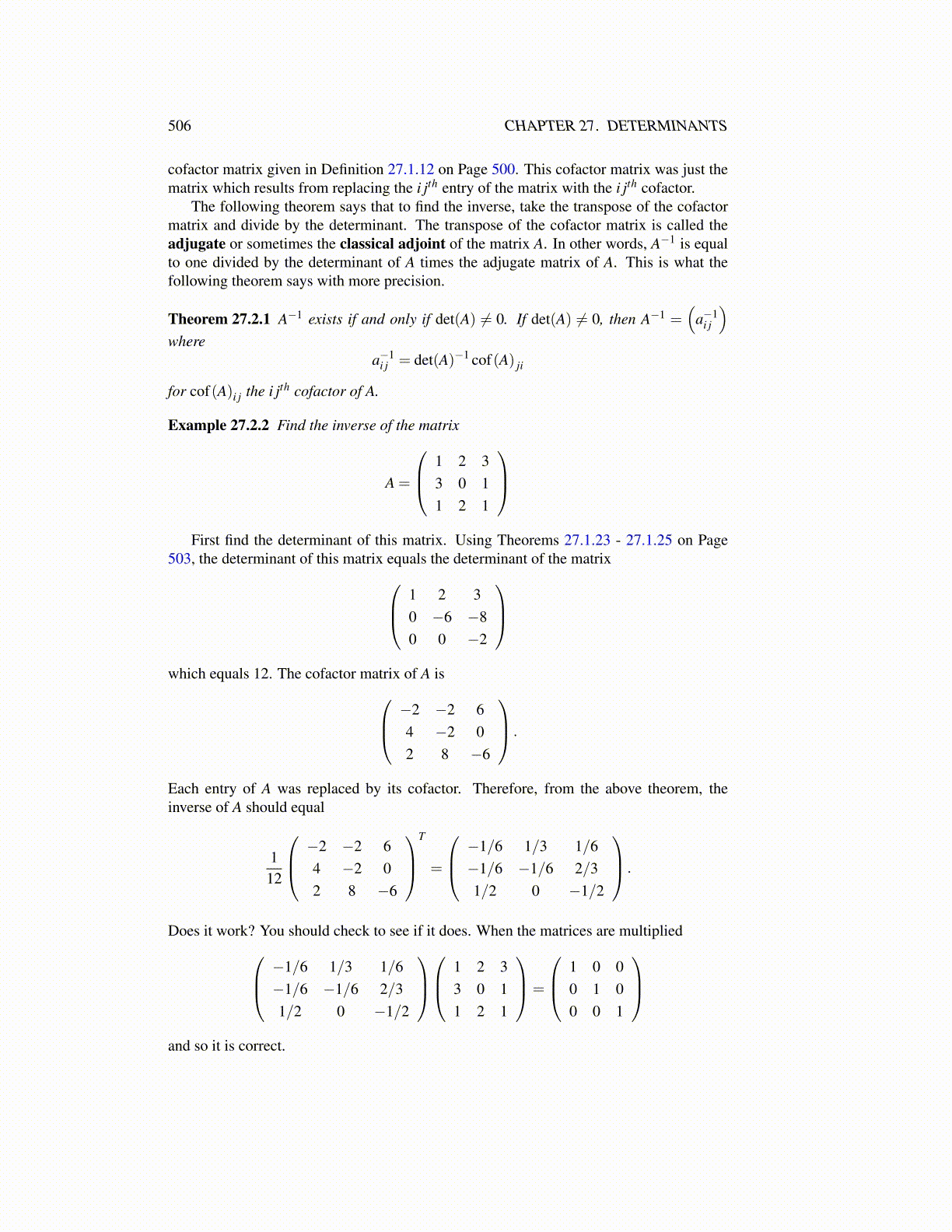
506 CHAPTER 27. DETERMINANTS
cofactor matrix given in Definition 27.1.12 on Page 500. This cofactor matrix was just thematrix which results from replacing the i jth entry of the matrix with the i jth cofactor.
The following theorem says that to find the inverse, take the transpose of the cofactormatrix and divide by the determinant. The transpose of the cofactor matrix is called theadjugate or sometimes the classical adjoint of the matrix A. In other words, A−1 is equalto one divided by the determinant of A times the adjugate matrix of A. This is what thefollowing theorem says with more precision.
Theorem 27.2.1 A−1 exists if and only if det(A) ̸= 0. If det(A) ̸= 0, then A−1 =(
a−1i j
)where
a−1i j = det(A)−1 cof(A) ji
for cof(A)i j the i jth cofactor of A.
Example 27.2.2 Find the inverse of the matrix
A =
1 2 33 0 11 2 1
First find the determinant of this matrix. Using Theorems 27.1.23 - 27.1.25 on Page
503, the determinant of this matrix equals the determinant of the matrix 1 2 30 −6 −80 0 −2
which equals 12. The cofactor matrix of A is −2 −2 6
4 −2 02 8 −6
.
Each entry of A was replaced by its cofactor. Therefore, from the above theorem, theinverse of A should equal
112
−2 −2 64 −2 02 8 −6
T
=
−1/6 1/3 1/6−1/6 −1/6 2/31/2 0 −1/2
.
Does it work? You should check to see if it does. When the matrices are multiplied −1/6 1/3 1/6−1/6 −1/6 2/31/2 0 −1/2
1 2 3
3 0 11 2 1
=
1 0 00 1 00 0 1
and so it is correct.